| |
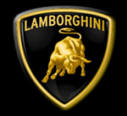
|
|
|
|
||
Connecting A Scanner Antenna To The Car Radio Antenna
|
This is not the place to explain the different types of scanners. There are many types. One type has a technology that sounds an alarm when you are within about 1 mile of a Highway patrol car. One is the Uniden Bearcat BCT7 scanner (Fig 1). Fig 1 Bearcat Scanner beside seat in 99VT
OK so much for the theory! Now one critical requirement for these scanners is a good antenna. In theory you could attach a CB radio like antenna to one and get a great signal. This is not an option for cars like this. Most manufactures supply a wire that you string somewhere around (preferably outside) the car. This I found leads to a weak signal ranging from somewhat helpful to totally useless. The ideal way would be to connect the antenna up to the radio antenna currently in the car. This antenna is located at the top of the windscreen of most cars and gives a strong signal. To do this will vary from car to car. I describe here how I did it in a 1999 Diablo VT and a 2001 Diablo 6L.
Scanner Antenna Attachment in a 1999 Diablo VT Most cars have an Alpine radio system. It can be just a radio and CD/tape player or the Alpine Navigational system. In theory pulling out the radio should be simple. There is a plastic Basel around the radio that snaps off exposing two latches on the sides that holds the radio in place. If these latches are flipped up the radio should slide out. Unfortunately this is often not the case. There is a metal bracket that surrounds the radio preventing it from sliding out easily (fig 2). After spending much time trying to get the radio out this way, I realized that a simpler way is to remover the whole metal panel that holds all the central instrument panel controls. This metal panel is held in place with 8 screws. The removed tray is shown in figure 3. There is a maze of wires under the panel. All the connectors to the AC control unit, the suspension settings control, the lights etc have connectors that allow the complete panel to be removed. While you have this metal panel take a close look at it. I have found that the flat black paint gets scratched over time in the car. Keys etc being placed on it often scratch it. It seems to have a very soft paint. Fortunately it can be re-sprayed quite easily and effectively (fig 4). If the car interior is black, I use Rust-Oluem High Professional Enamel Low Gloss Spray paint. (DE1634). This paint when dry, stands up better to scratches etc during normal use. Be sure to spray the tops of the nuts as well. It appears to exactly match the color Lamborghini black color and texture exactly. Ok lets get started. We need to locate and disconnect the car radio antenna cable going to the back of the radio. It simply pulls out on Alpine units. It is a black standard coax cable. Cut about 6 inches from the end of this cable (fig 5) and peal back the copper braded wire. With the central copper wire protruding insert a standard coax cable connector (fig 6). These are available at any electronics components store (e.g. Radio Shack). Also at the same store obtain a "TV coax cable splitter box". This is a component that allows one coax cable to be split into two outputs (fig 7) The antenna coax cable from the cars windscreen in attached to the input side of the splitter box. One output then goes to the short 6" cable cut off above (now also with a coax cable connector) and to the radio input. The other output of the splitter box goes to the coax cable antenna connection of the scanner. So we have two devices (Radio and Scanner) sharing input from the cars antenna. The diagram is like this:-
The reason we go through these elaborate lengths to encase the splitter in a splitter box is that if one simply cuts the coax wires and splices the new antenna connection with insulation tape etc. we get an unshielded connection with severe loss in signal strength. This way we get good signal strength on both devices. Note do not use this approach to hook up a CB radio. These send out signals to the antenna. The strength of such a signal can burn out the input of a radio on the same wire.
Scanner Antenna Attachment in a 2001 Diablo 6.0L VT The setup is similar for 6.0L Diablos. The difference is that the radio antenna comes in to the a unit behind the drivers seat. The reason for this that these cars have in fact Alpine equipment to receive TV signals. They are outlined in the 6.0L shop manual. I have never seen them used. Perhaps a project for a later date. Anyway the coax cable needs to be split as described above. Figure 10 shows the splitter box in a 6.0L Diablo. This shows the setup after the panel behind the drivers seat is removed. This can be easily done by moving the seat full forward. Removing the 2 screws that hold the panel to the floor and the 3 screws that attach it under the "storage box cover" to the rear firewall.
|
||
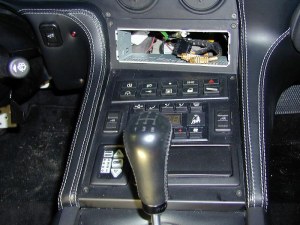 |
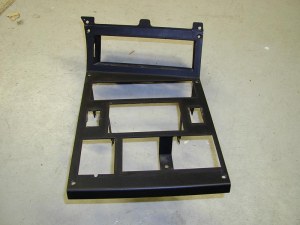 |
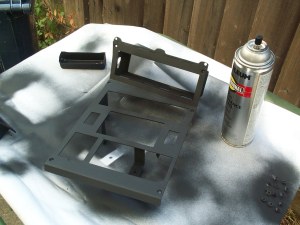 |
| Fig 2. Radio removed | Fig. 3. Central dash panel removed | Fig 4. Spray painted panel |
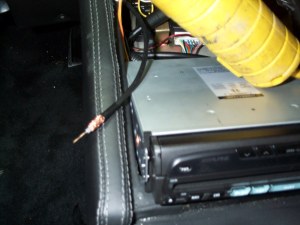 |
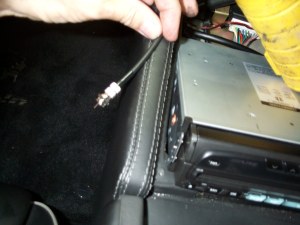 |
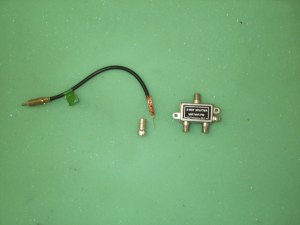 |
| Fig 5. Coax cable prepared for socket | Fig 6. Antenna cable with socket |
Fig 7.
Radio antenna splitter box
|
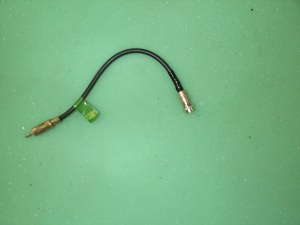 |
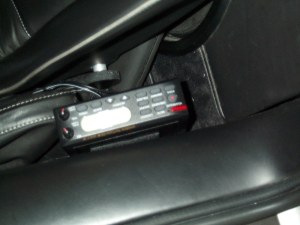 |
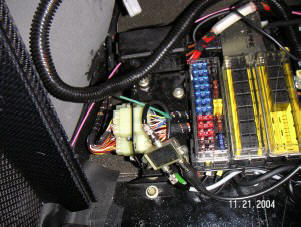 |
|
Fig 8.
Radio antenna connection
|
Fig 9. Scanner in place with antenna connection | Fig 10. Antenna attachment behind driver seat in 6.0L Diablo |